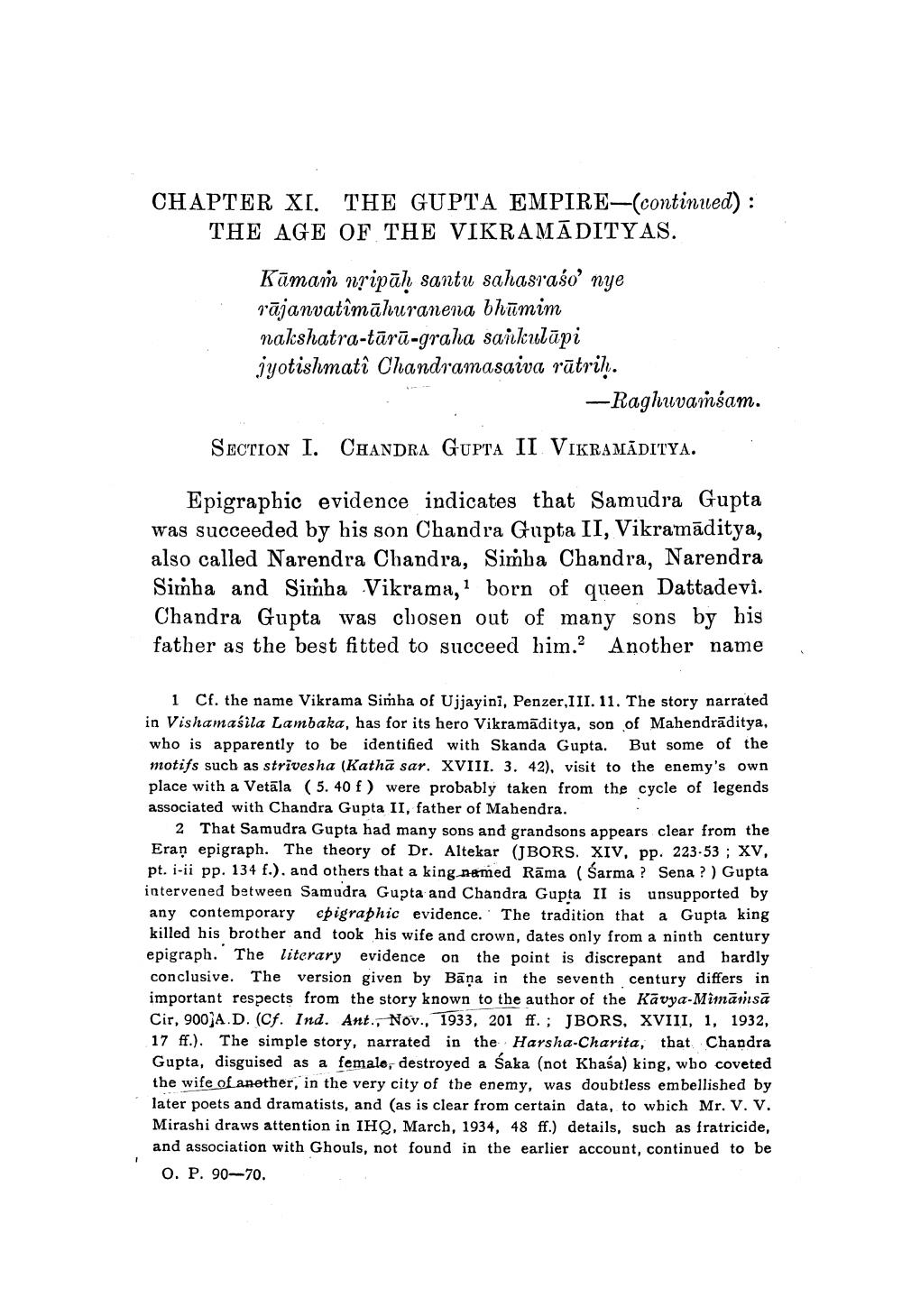________________
CHAPTER XI. THE GUPTA EMPIRE-(continued):
THE AGE OF THE VIKRAMĀDITYAS.
Kāmam nļipāh santu sahasraśo' nye rājanvatîmāhuranena bhūmim nakshatra-tārā-graha sankulāpi jyotishmati Chandramasaiva rūtrih.
- Raghuvamsam. SECTION I. CHANDRA GUPTA II VIKRAMADITYA.
Epigraphic evidence indicates that Samudra Gupta was succeeded by his son Chandra Gupta II, Vikramāditya, also called Narendra Chandra, Simba Chandra, Narendra Simha and Simba Vikrama, born of queen Dattadevi. Chandra Gupta was chosen out of many sons by his father as the best fitted to succeed him. Another name
1 Cf. the name Vikrama Simba of Ujjayini, Penzer III. 11. The story narrated in Vishamasila Lambaka, has for its hero Vikramaditya, son of Mahendrāditya, who is apparently to be identified with Skanda Gupta. But some of the motifs such as strivesha (Kathā sar. XVIII. 3. 42), visit to the enemy's own place with a Vetāla (5. 40 f) were probably taken from the cycle of legends associated with Chandra Gupta II, father of Mahendra.
2 That Samudra Gupta had many sons and grandsons appears clear from the Eran epigraph. The theory of Dr. Altekar (JBORS. XIV, pp. 223-53; XV, pt. i-ii pp. 134 f.), and others that a king named Rāma ( Sarma ? Sena ? ) Gupta intervened between Samudra Gupta and Chandra Gupta II is unsupported by any contemporary cpigraphic evidence. The tradition that a Gupta king killed his brother and took his wife and crown, dates only from a ninth century epigraph. The literary evidence on the point is discrepant and hardly conclusive. The version given by Bāņa in the seventh century differs in important respects from the story known to the author of the Kavya-Mimārsā Cir, 900JA.D. (Cf. Ind. Ant., Nov., 1933, 201 ff.; JBORS, XVIII, 1, 1932, 17 ff.). The simple story, narrated in the Harsha-Charita, that Chandra Gupta, disguised as a female, destroyed a Saka (not Khasa) king, who coveted the wife of another, in the very city of the enemy, was doubtless embellished by later poets and dramatists, and (as is clear from certain data, to which Mr. V. V. Mirashi draws attention in IHQ, March, 1934, 48 ff.) details, such as fratricide, and association with Ghouls, not found in the earlier account, continued to be
O. P. 90–70.




